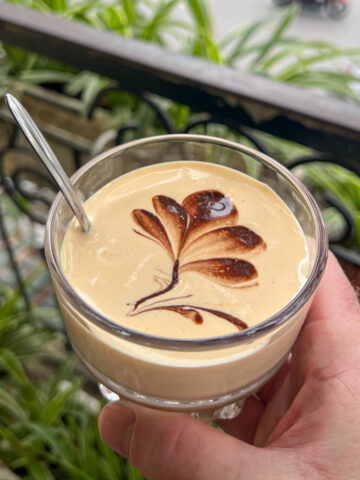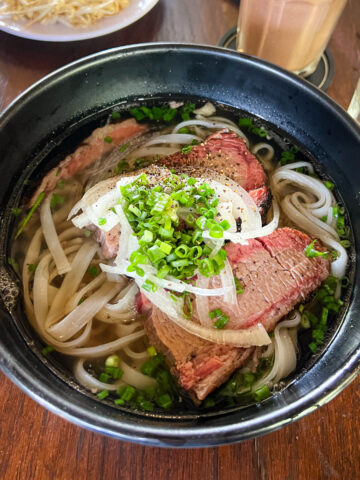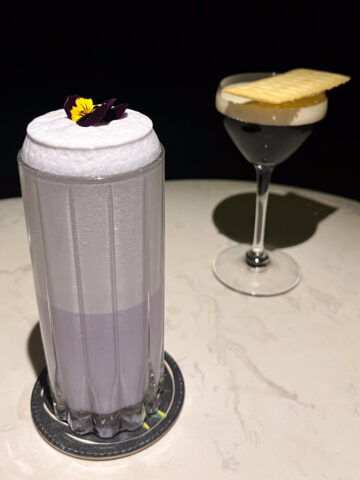Vietnam, a country celebrated for its vibrant flavors and rich culinary traditions, offers a dessert landscape as diverse and enjoyable as its scenic beauty. In this article, we're diving into the sweet world of Vietnamese desserts.
Whether it's chuoi nep nuong, a grilled banana delicacy wrapped in sticky rice, or the iconic che, a colorful sweet soup, these treats are as much a part of Vietnamese cuisine as pho and banh mi.
My introduction to Vietnamese desserts came by way of a 2023 trip to the country in Southeast Asia. Since then, I've continued to try new Vietnamese dishes at home in Austin.
Table of Contents
Dessert in Vietnam
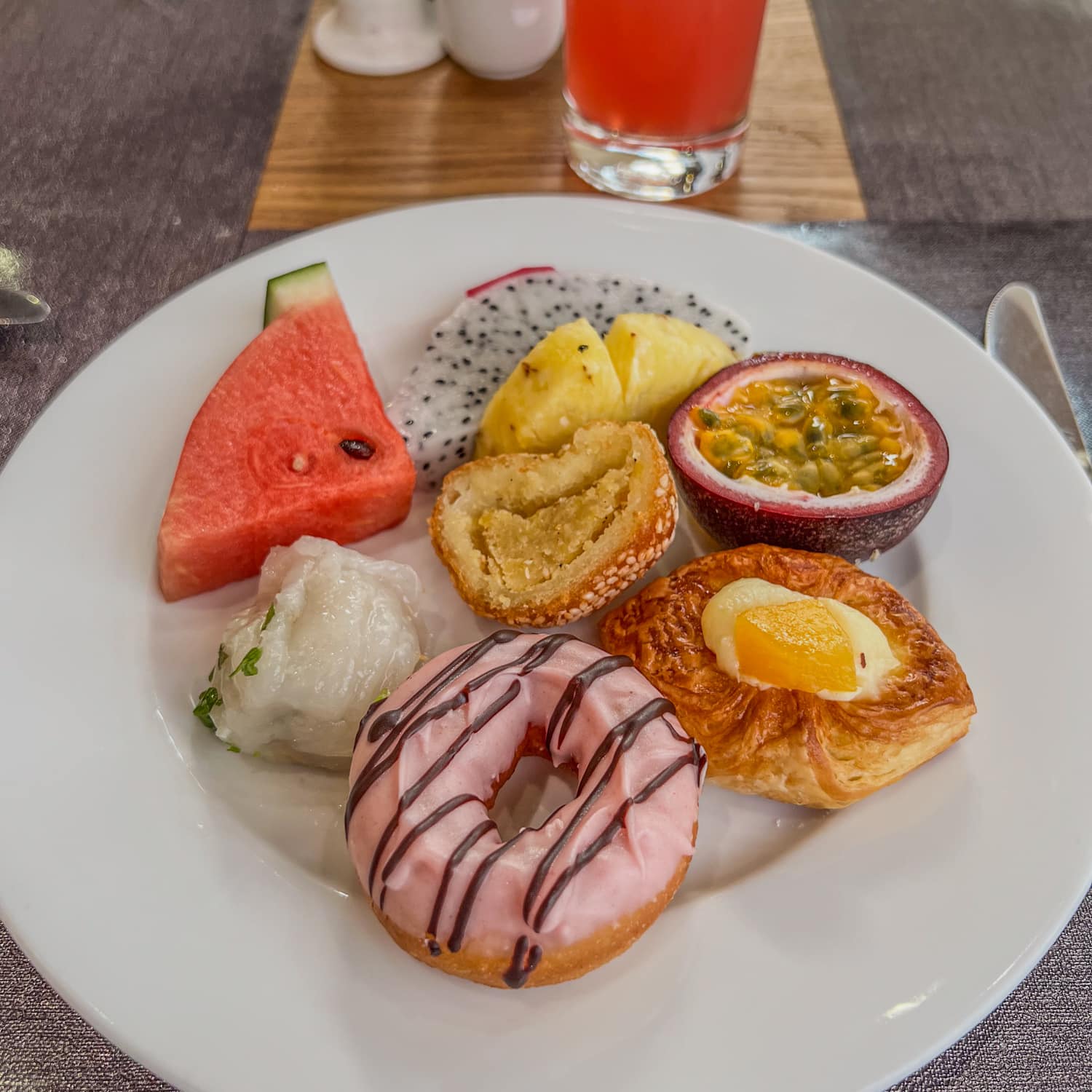
Traditional desserts in Vietnam often fall into one of several categories, and I've organized this story accordingly:
- Banh - cakes and pastries
- Che - sweet soups, puddings, and jellies
- Xoi - sticky rice
- Beverages
- Raw fruits
For everything else, I've included a catch-all category at the end.
Banh - Cakes and Breads
The "banh" category includes a variety of traditional cakes and pastries. Some examples include banh bo (a Vietnamese sponge cake), banh tet (a cylindrical sticky rice cake), and banh da lon (a layered cake made from tapioca starch, rice flour, mung beans, and coconut milk).
Banh Cam - Sesame Balls (Donuts)
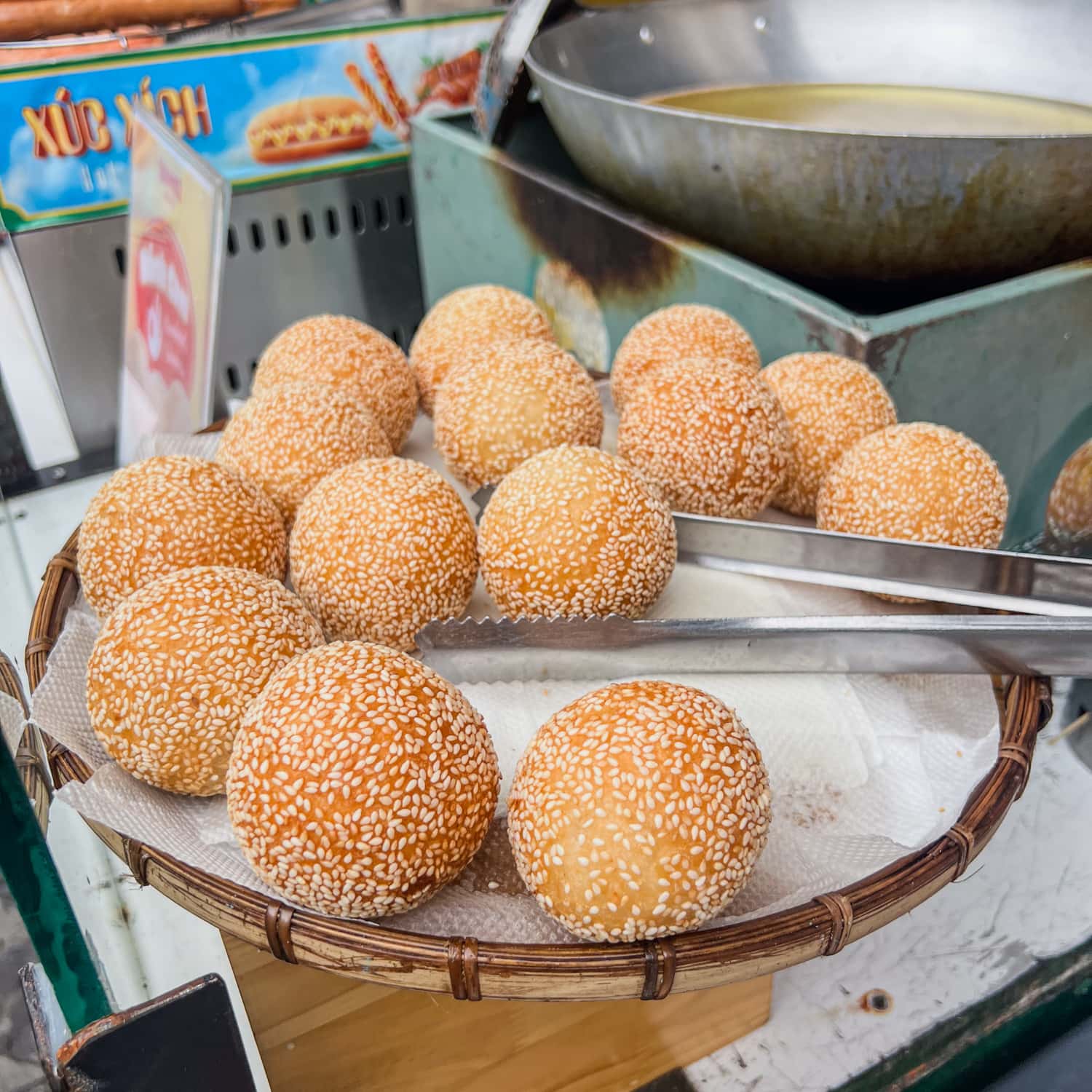
Banh cam are golden-brown donuts with a crispy exterior coated in sesame seeds that give way to a soft, chewy interior.
Vietnamese donuts can be as simple as these or filled with a sweet surprise, typically a mung bean paste.
I snacked on the sesame balls pictured above while visiting the Golden Bridge in Ba Na Hills, Central Vietnam.
In addition to the sesame balls, you'll also see street vendors selling thin, ring-shaped donuts.
Banh Chuoi - Banana Cake

Bananas are common in Vietnamese desserts, as exemplified in banh chuoi (banana cake) or banh chuoi nuong (baked banana cake).
This delicious dessert melds ripe bananas with sweet coconut milk, creating a moist, dense texture.
Kel and I tried our first slice of banana cake at Highlands Coffee, a Vietnamese chain, on our last morning in Saigon. As long as you like bananas, it's a reliable choice.
Banh chuoi hap (steamed banana cake) is a common variation.
Banh Flan - Creme Caramel

Banh flan is an adaptation of the classic French creme caramel, a beloved dessert known for its smooth, velvety texture and rich, creamy flavor.
This Vietnamese dessert consists of a delicate, soft custard base made with eggs, milk, and sugar, often infused with a hint of vanilla or coconut to add depth to its flavor profile.
The custard is gently cooked in a water bath to achieve its signature silky consistency. The hallmark of banh flan is the caramel layer on top, which, when inverted, forms a glistening, sweet syrup that perfectly complements the creamy custard.
This luscious dessert is simple and elegant, capturing the essence of Vietnamese culinary finesse and its French influences.
Che - Sweet Soups
Perhaps the most iconic of Vietnamese desserts, che is a versatile category of sweet soups.
These can be hot or cold and feature ingredients like beans, tapioca pearls, fruit, coconut cream sauce, and sticky rice.
Countless regional and seasonal variations make che a diverse and ever-evolving dessert category.
Che Dau Do - Red Bean Soup
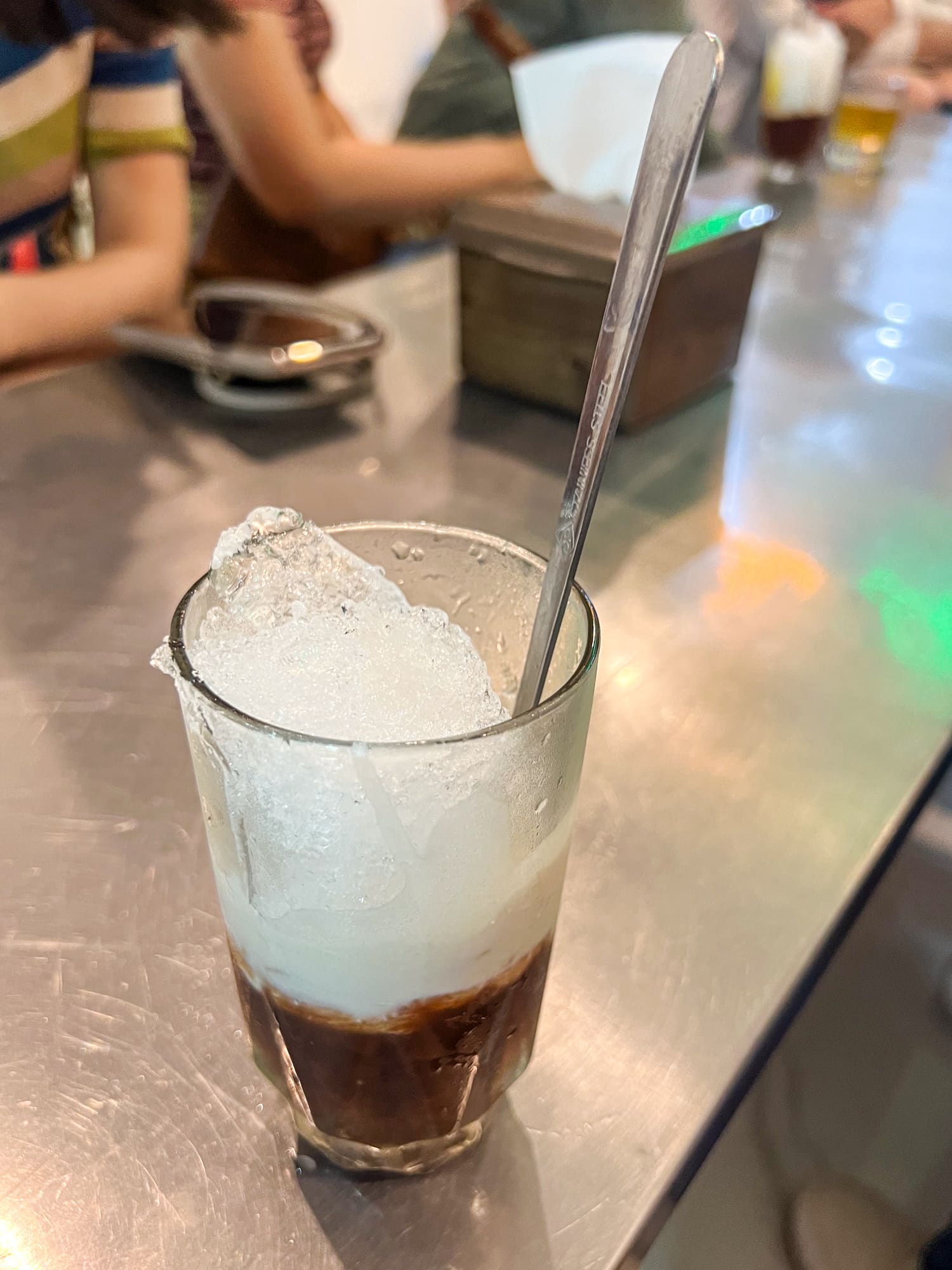
My intro to che came at the end of a street food tour in Da Nang, where I was asked to pick a flavor from a menu that included options like "mix bean," "green bean," and "Thai sweet with durian."
It was the end of a long day, and I had no idea what to expect when I chose "red bean."
The primary ingredient is red kidney beans, boiled and mashed into a paste and topped with creamy coconut milk and ice.
Che is typically presented in a tall glass with a long spoon for combining and scooping the sweet soup.
Che Ba Mau - Three-Colored Dessert

Che ba mau, literally translating to "three-color dessert," is a hearty treat that showcases the variety of flavors and textures in Vietnamese desserts.
This eye-catching dessert features three distinct layers. The bottom layer typically consists of red beans, known for their earthy sweetness.
The middle layer is often made of yellow mung beans or green jelly, adding a contrasting texture and subtle flavor.
The top layer is usually made of bright, visually appealing ingredients such as green pandan jelly, thus adding a touch of aromatic sweetness.
The three layers are generously doused in a sweetened coconut milk sauce and served with crushed ice, making it a popular choice on a hot day.
Che Hat Sen - Lotus Seed Sweet Soup

Che hat sen is a subtly sweet Vietnamese dessert soup that showcases the delicate flavors and health benefits of lotus seeds.
This Vietnamese food originated in Hue, a former capital of Vietnam, where it had been served to royal families.
Today, it's a hallmark of special occasions, such as the dessert at my friend Nick's wedding, the basis for my trans-Pacific journey.
The main ingredient, hat sen (lotus seeds), is revered in Vietnamese culture for its supposed medicinal properties (aiding relaxation and sleep) and slightly sweet taste.
In this tasty dessert, the lotus seeds are simmered until tender, often in a lightly sweetened broth, which can be flavored with pandan leaves or ginger to add depth and aroma.
The texture of che hat sen is soothing and comforting, with the softened lotus seeds providing a tender, slightly chewy bite. This dessert is served warm or chilled.
On our first night at the InterContinental Hanoi Westlake, I tried a variation of this soup, che hat sen tuyet nhi long nhan (chilled lotus soup with white fungus in longan syrup).
Che Thai - Vietnamese Fruit Cocktail
Che Thai, often called the Vietnamese fruit cocktail, is a creative adaptation of the classic Thai dessert.
It features an assortment of tropical fruits, such as lychee, longan, jackfruit, and durian, mixed with colorful jelly, chewy tapioca pearls, and sometimes agar-agar strips (a seaweed-based vegetarian alternative to gelatin).
The fruits and jelly components are submerged in a sweetened coconut milk syrup, which adds a creamy and fragrant dimension to the dish. Che Thai is often topped with crushed ice, making it the perfect dessert on a hot summer day.
It's not uncommon to find additional toppings like roasted peanuts or sesame seeds, which add a nutty crunch.
Xoi - Sweet Sticky Rice

Xoi is a ubiquitous sweet sticky rice. Characteristically made from glutinous rice, xoi is known for its chewy texture and is often infused with a hint of coconut for a subtle richness.
This dish can be sweetened and paired with various toppings, such as mung beans, sesame seeds, or ripe mango, creating a balance of flavors and textures.
Xoi is not just a dessert; it's a cultural staple, often enjoyed for breakfast, a snack, or a celebratory dish during festivals.
Fruits

Fresh fruit plays a significant role in Vietnamese desserts, often served as a simple, sweet end to a meal. Tropical fruits like dragon fruit, lychee, and mango are common.
On our overnight cruise of Ha Long Bay in Northern Vietnam, we were served banana with sweet cake for dessert on the first day and fresh dragon fruit and watermelon with vanilla pudding on the second.
Beverages
The Vietnamese people enjoy sweet beverages as desserts, and there's no shortage. Examples include infinite variations of Vietnamese coffee, milkshakes, and smoothies.
Ca Phe Sua Da - Vietnamese Iced Coffee
Vietnamese iced coffee is made with sweetened condensed milk, which punches the sugar quotient and adds creaminess.
Ca Phe Trung - Vietnamese Egg Coffee

In 1946, a former bartender in Hanoi whisked raw egg yolk with sweetened condensed milk, butter, and cheese into a thick foam and added it to Vietnamese coffee. The drink was an instant hit.
At Cafe Giang in Hanoi, where it was invented, I ordered an egg coffee with crumbled Oreos, which added a chocolatey, crunchy texture to an already decadent drink.
Milkshakes
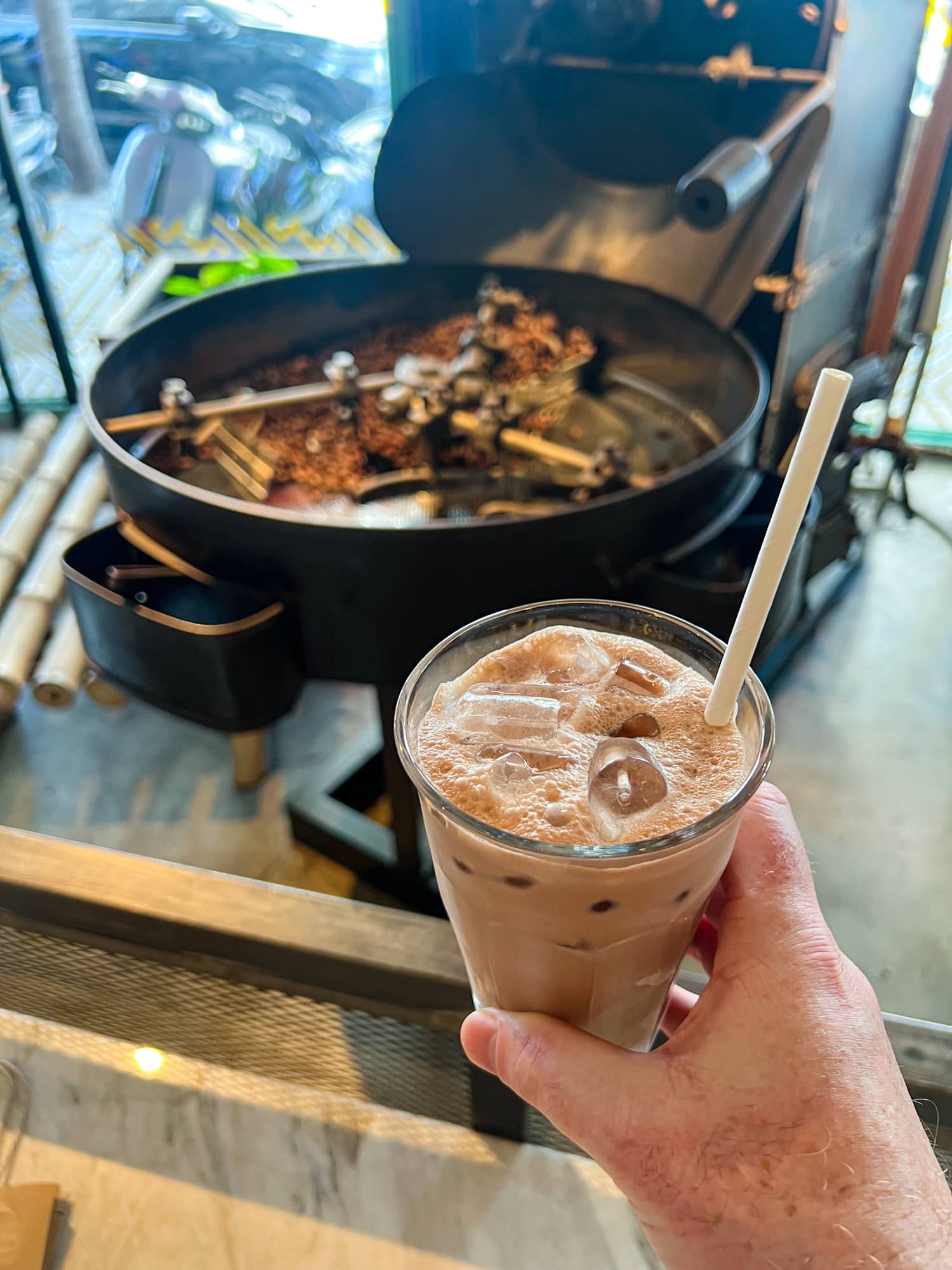
One of the country's best places for chocolate drinks and milkshakes is Maison Marou, a craft chocolatier with cafes/dessert shops in Saigon (Ho Chi Minh City) and Hanoi.
Flagship locations feature cacao beans roasted in-store, sending incredible smells wafting through the air.
Kel and I visited their flagship location in District 1 of Saigon three times because it was around the corner from our guesthouse.
We enjoyed the sweet treats there so much that we dropped by Maison Marou's flagship chocolate shop in Hanoi before departing for Japan.
Fruit Smoothies
Vietnam is a paradise for fruit smoothie enthusiasts. Everyday smoothies are not only refreshing but also a kaleidoscope of flavors.
Favorites include mango, dragon fruit, papaya, and banana. They often blend fresh fruit, ice, and sometimes sweetened condensed milk or yogurt, creating a creamy texture.
Avocado smoothies (sinh to bo) are particularly beloved for their richness. Additionally, smoothies with a combination of fruits, like pineapple with coconut or watermelon with mint, are also popular.
Street vendors and cafes across Vietnam serve smoothies, making them a convenient and delicious way to beat the heat and enjoy the local produce.
Everything Else
Chuoi Nep Nuong - Banana Grilled Sweet Rice
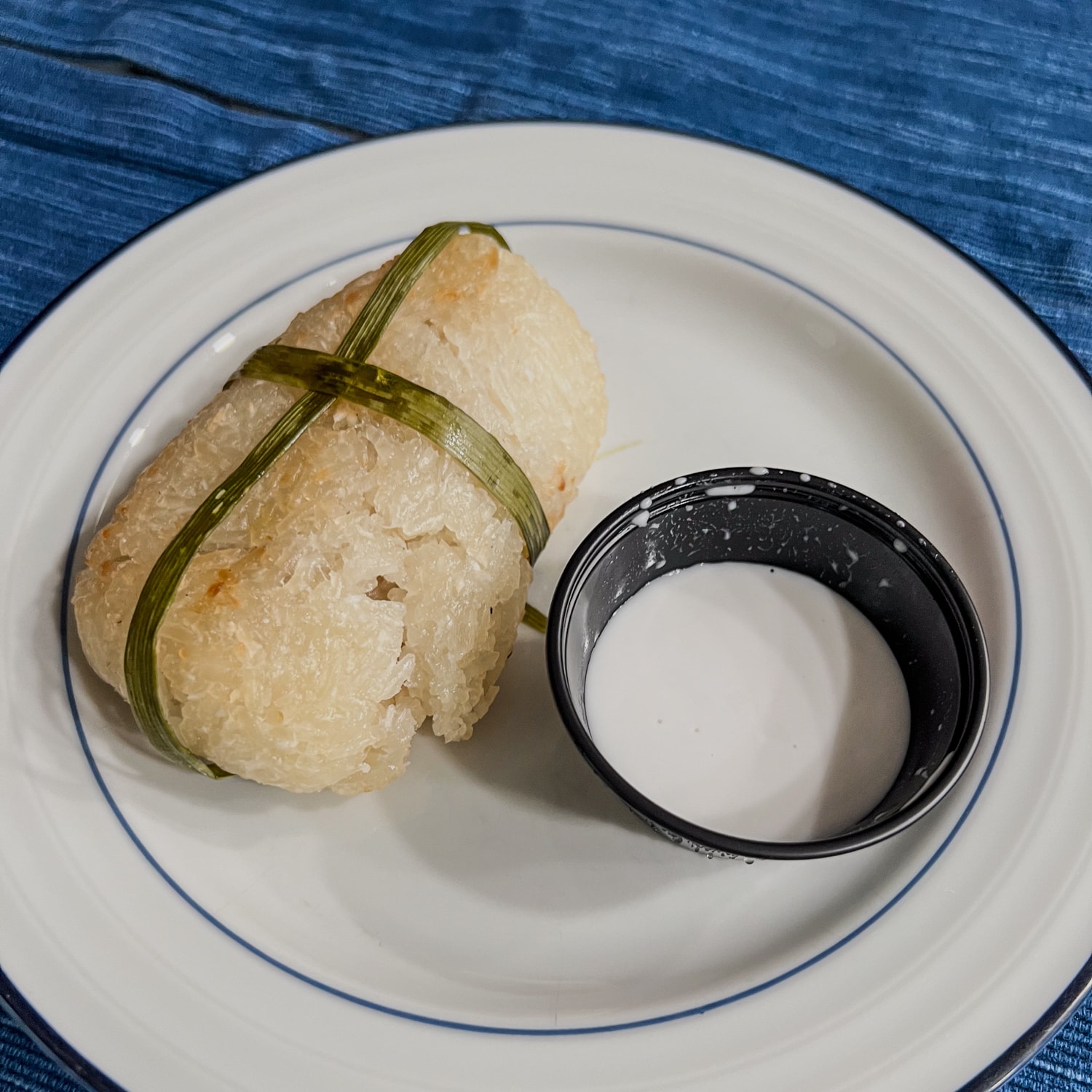
Chuoi nep nuong is a beloved Vietnamese dessert that combines the sweet, natural flavors of bananas with the comforting taste of glutinous rice.
This dessert involves bananas wrapped in a sticky, sweet rice layer and then encased in a banana leaf.
The entire package is grilled, allowing the rice to become slightly crispy on the outside while remaining soft and sticky on the inside.
The heat from the grill caramelizes the sugars in the banana, intensifying its flavor and creating a delightful contrast with the chewy rice.
Sesame seeds and a drizzle of creamy coconut sauce are often added to enhance the flavor. The result is a harmonious blend of tastes and textures.
Kem - Vietnamese Ice Cream
Unlike Western-style ice creams that are predominantly cream-based, Vietnamese ice cream, known as "kem," often incorporates coconut milk, giving it a lighter, subtly sweet, and tropical flavor profile.
Typical flavors include durian, known for its distinctive taste and aroma, and tropical fruits like mango, lychee, and coconut.
Vietnamese ice cream may also include local ingredients and flavors, such as green rice (kem xoi), which combines ice cream with sweetened sticky rice, or kem bo, an avocado ice cream.
Some versions might include condensed milk or even incorporate herbs and spices, like ginger or cinnamon.
At Vietnam's best restaurant, Anan Saigon, one of the desserts that concluded our dinner was nuoc mam ice cream.
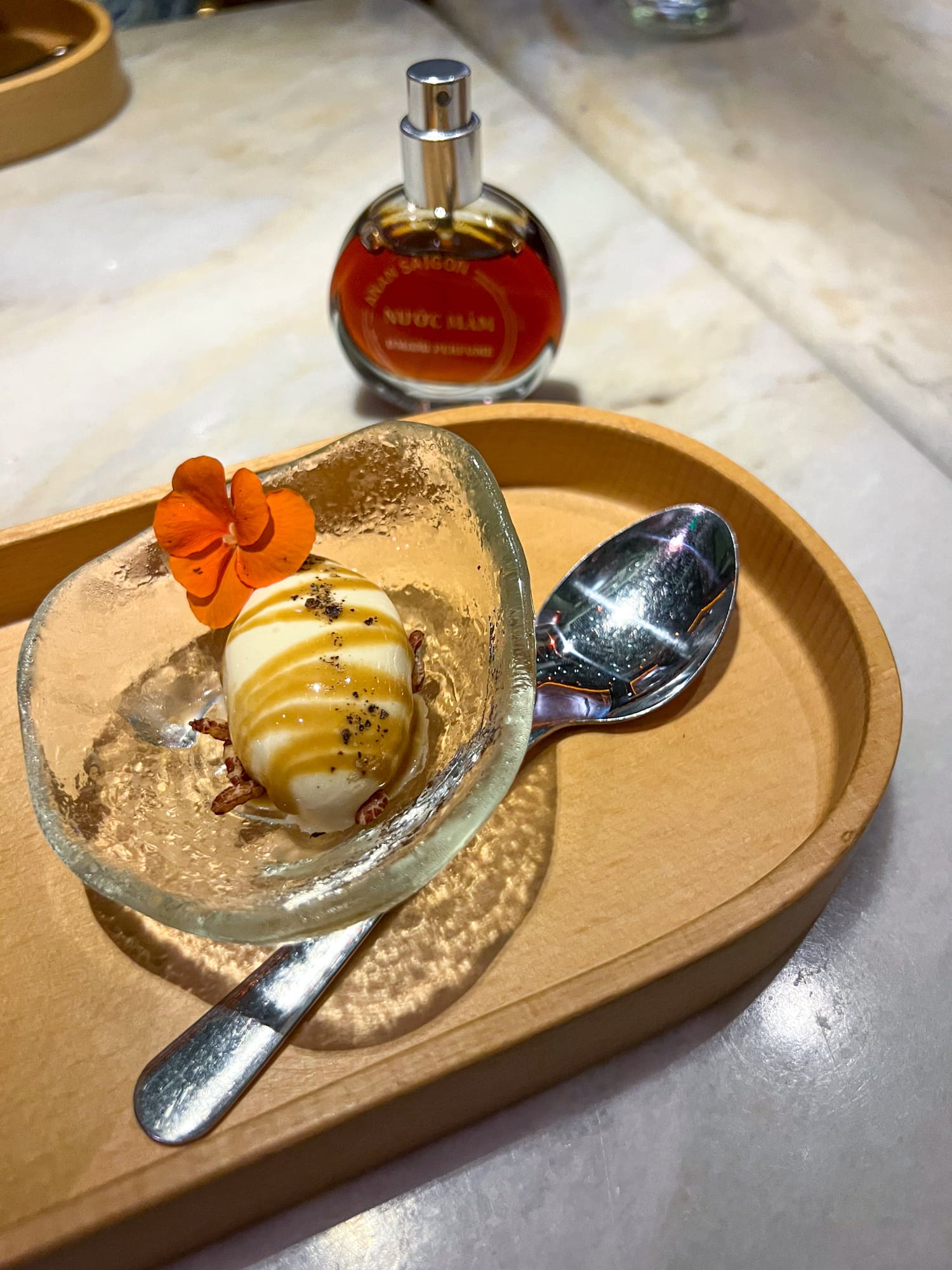
In this creative approach of pairing ice cream with local ingredients, French vanilla ice cream was topped with fish sauce caramel and black pepper from Phu Quoc (a Vietnamese island off the coast of Cambodia in the Gulf of Thailand).
Conclusion
Wrapping up our virtual tour of Vietnamese desserts, it's clear the Southeast Asian country has much to offer pastry lovers.
From the caramelized flavors of banana grilled sweet rice to silky flans, there are popular Vietnamese desserts to cater to every sweet tooth.
Whether you're sipping on an avocado smoothie, indulging in a bowl of sweet soup, or savoring sticky rice, these Vietnamese sweets are a testament to the country's culinary heritage.


